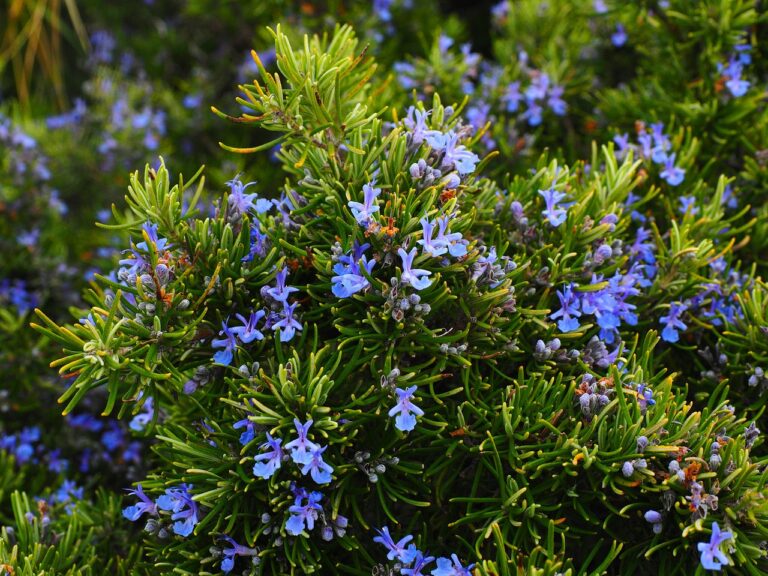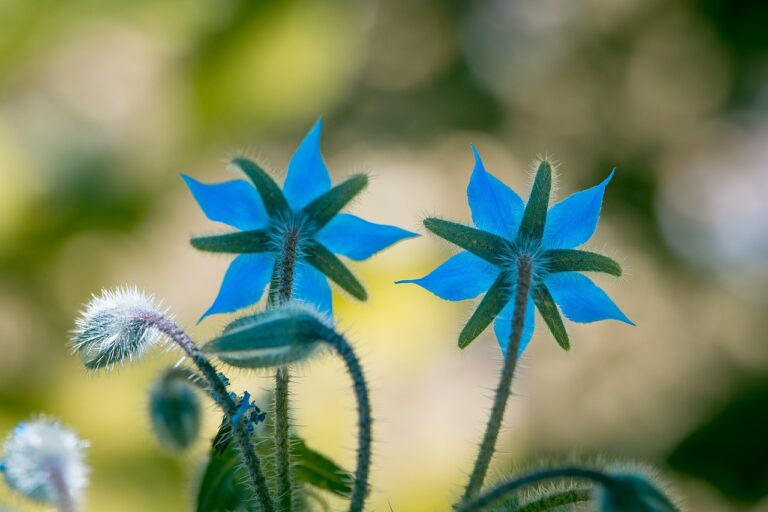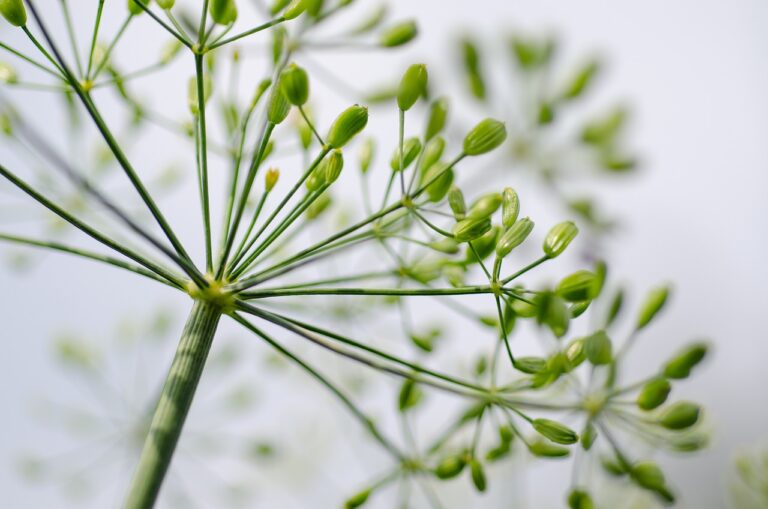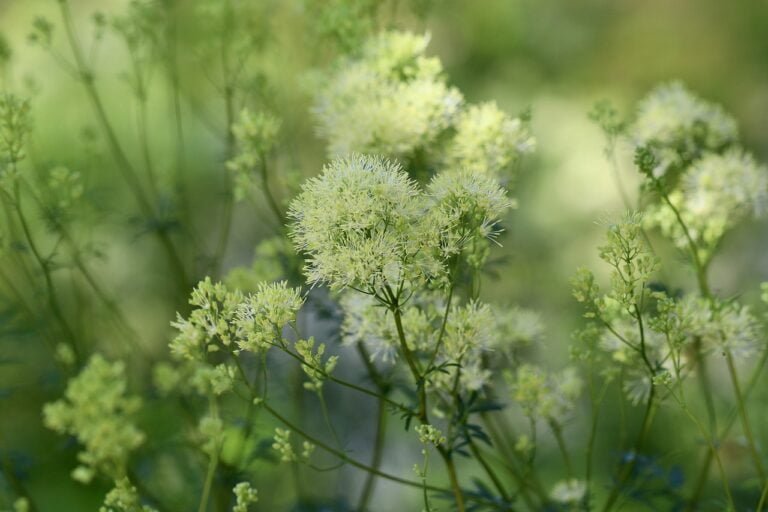Houttuynia Cordata
Houttuynia cordata, a herbaceous perennial, flourishes in moist soil with sunlight. It reaches up to 0.6–1m tall. Indigenous to Southeast Asia, it thrives in humid areas. The plant appreciates wet terrain by streams or forests. Cultivation demands moist soil and consistent watering. This plant has culinary and medicinal uses, like in teas and aiding inflammation. Chemical compounds offer a distinct aroma and health benefits. Its anti-inflammatory effects show promise in autoimmune conditions. Traditional medicine in Asia employs it for respiratory ailments. Its rich history in herbal practices showcases its health benefits and versatility. More insights await into this resilient herb.
Growth and Cultivation
Houttuynia cordata, a herbaceous perennial plant with a maximum height of 0.6–1m and a spreading capacity of up to 1m, thrives best in moist to wet soil under partial or full sun exposure. This plant, native to Southeast Asia, is well-suited for regions with high humidity and moderate temperatures. In its natural habitat, Houttuynia cordata can be found near streams or in damp forest areas, reflecting its preference for consistently moist conditions.
Cultivating Houttuynia cordata requires attention to its environmental needs. When planting, ensuring the soil remains consistently moist without becoming waterlogged is essential for best growth. Regular watering is necessary, especially during dry spells, to mimic its native habitat. Additionally, providing partial to full sun exposure contributes to strong growth and vibrant leaf colors.
In herbal medicine, Houttuynia cordata has been traditionally used for its potential health benefits. The plant contains various bioactive compounds that are of interest for their medicinal properties. However, it is important to note that caution should be exercised when using Houttuynia cordata for medicinal purposes due to limited high-quality clinical research on its efficacy and safety. As with any herbal medicine, consulting a healthcare professional is advisable before incorporating it into one’s wellness routine.
Culinary and Medicinal Uses
Exploring beyond its growth requirements, the versatility of Houttuynia cordata extends to both culinary applications and traditional medicinal practices, showcasing a range of uses for this herbaceous perennial plant. In culinary settings, Houttuynia cordata is a popular ingredient in various dishes such as salads, salsas, and grilled meats, prized for its unique fishy flavor. Dried leaves are commonly used in Japan and Korea to brew herbal teas, adding a invigorating and aromatic essence to the beverages.
In traditional medicine, Houttuynia cordata has been employed for centuries to address a variety of health issues due to its phytopharmacological aspects. The plant is revered for its anti-inflammatory effects, antioxidant properties, and potential anti-viral capabilities. These medicinal applications are supported by the presence of essential oils in Houttuynia cordata, such as β-myrcene and 2-undecanone, which contribute to both its distinct aroma and potential health benefits. While further research is necessary to fully understand and reveal the plant’s therapeutic potential, its historical use in traditional medicine underscores its significance in herbal remedies.
Aroma Profile and Benefits
The intricate blend of chemical compounds within Houttuynia cordata plays a significant role in its distinctive aroma profile and possible health benefits. Chemical compounds such as β-myrcene and 2-undecanone are accountable for the unique fragrance emitted by this plant. The essential oil found in Houttuynia cordata gives rise to its characteristic fishy scent when the leaves are crushed, earning it the moniker ‘fish mint.’ This aromatic profile makes it a versatile ingredient in various cuisines, adding richness to dishes like salads, salsas, and grilled meats.
Furthermore, beyond its aromatic qualities, the essential oil of Houttuynia cordata holds potential health benefits. The plant is abundant in compounds that may provide medicinal properties, including anti-inflammatory and antimicrobial effects. These properties make Houttuynia cordata a valuable addition to traditional herbal remedies, particularly in Asian cultures. In Japan and Korea, dried leaves are commonly used to brew herbal teas, harnessing both the aroma and potential health benefits of the plant. Additionally, in Vietnamese cuisine, the fragrant leaves are used to heighten the flavors of dishes like noodle salads, showcasing both the culinary and potential medicinal aspects of Houttuynia cordata.
Pharmacological Effects and Research
In examining the pharmacological effects and research of Houttuynia cordata, the plant’s anti-inflammatory properties have been prominently demonstrated through a series of in vitro and in vivo studies. Its ability to regulate immune mediators and reduce Th2-mediated immune disorders makes it a promising candidate for addressing allergic responses. The chemical components present in Houttuynia cordata, such as alkaloids, flavonoids, and essential oils, play an essential role in its pharmacological activities by modulating the immune response and dampening inflammatory processes.
- Regulation of Immune Mediators: Houttuynia cordata has shown efficacy in modulating immune mediators, which can help in managing autoimmune conditions and inflammatory responses triggered by various stimuli.
- Reduction of Th2-Mediated Immune Disorders: By targeting Th2-mediated immune disorders, Houttuynia cordata exhibits potential in alleviating allergic responses and conditions where the immune system overreacts to harmless substances.
- Modulation of Inflammatory Processes: The plant’s anti-inflammatory activity extends to regulating inflammatory processes, making it a valuable asset in combating diseases characterized by chronic inflammation and tissue damage.
Through its intricate interplay with the immune system and its potent anti-inflammatory properties, Houttuynia cordata emerges as a botanical powerhouse with the potential to offer therapeutic benefits in immune-related disorders and conditions associated with exaggerated immune responses.
History and Traditional Use
With a rich historical legacy spanning centuries, traditional applications of Houttuynia cordata in East Asian medicinal practices have underscored its versatile therapeutic properties. In traditional Chinese medicine, Houttuynia cordata, also known as ‘Yu Xing Cao,’ has been a staple herb for addressing various health issues. Particularly renowned for its effectiveness in treating respiratory conditions, this herb has been historically used to alleviate symptoms of coughs, bronchitis, and asthma. Its cooling properties make it especially valuable for clearing heat and resolving phlegm in the lungs.
In addition to its prominence in traditional Chinese medicine, Houttuynia cordata has also played a significant role in Korean and Japanese traditional medicine practices. In Korea, it has been employed for detoxification purposes and to support immune system function. On the other hand, in Japan, the plant has been cherished for its antimicrobial and anti-inflammatory properties. Its traditional uses in these regions extend beyond respiratory conditions to include addressing skin problems, reducing inflammation, promoting detoxification, and supporting overall well-being. The extensive historical use of Houttuynia cordata across various East Asian medicinal systems highlights its enduring significance and efficacy in promoting health and well-being.




